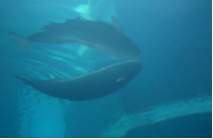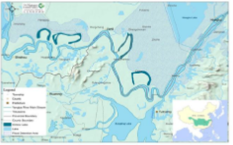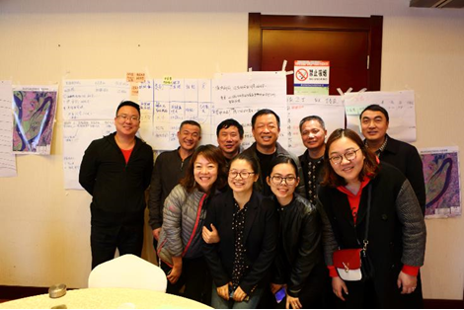Story sent by Wang Luhong and Jin Tong, TNC China
Images below: Yangtze finless porpoise (right), and location of the nature reserves (left) ©TNC
 The Yangtze Finless Porpoise (Neophocaena asiaeorientalis) is currently the only freshwater mammal living in the Yangtze River. Due to the human disturbances, the number of these porpoises has rapidly declined and they are now listed on the IUCN Red List of Threatened Species.
The Yangtze Finless Porpoise (Neophocaena asiaeorientalis) is currently the only freshwater mammal living in the Yangtze River. Due to the human disturbances, the number of these porpoises has rapidly declined and they are now listed on the IUCN Red List of Threatened Species.
 To better protect this porpoise from extinction, China established the Hewangmiao/Jicheng Yangtze Finless Porpoise Nature Reserve in 2015. The 6,000 hectare reserve is located on an old section of the Yangtze River mainstem that was created by river straightening projects back in 1968. To date, 12 porpoises have been transported to the reserve, and currently, there are 18 porpoises living in the reserve. The reserve faces a few main challenges:
To better protect this porpoise from extinction, China established the Hewangmiao/Jicheng Yangtze Finless Porpoise Nature Reserve in 2015. The 6,000 hectare reserve is located on an old section of the Yangtze River mainstem that was created by river straightening projects back in 1968. To date, 12 porpoises have been transported to the reserve, and currently, there are 18 porpoises living in the reserve. The reserve faces a few main challenges:
- Habitat disturbance from human activities (15,178 people live around the reserve)
- Lack of funding and skills to monitor the ecological changes in the reserve
- Lack of collaborative management between the two provinces that manage the reserve area
The Nature Conservancy is focusing on solutions that:
- Provide technical and funding support for environmental monitoring and biodiversity surveys to get more information about the conservation targets and potential threats
- Train reserve staff in conservation management
- Develop a participatory conservation management plan that supports local engagement efforts, including interviews and community surveys
- Initiate nature education programs for the surrounding schools and communities
In March 2019, coaches Wang Luhong, Luo Yongmei, and Zhang Yanfang (TNC China) conducted a two-day Conservation Action Planning (an equivalent of the Open Standards) training for more than 40 participants from the two porpoise reserves. During the training, local government agencies, fishers, NGOs, research institutes, and other invited stakeholders divided into three groups along with reserve staff to discuss conservation targets and threats and learn to develop potential conservation actions and a monitoring plan. After the training, the Conservation Action Planning framework was adopted to develop a master plan for the two Reserves. The project team will complete a Conservation Action Plan for the reserves at the end of this year. The team is hopeful that this approach will help protect the unique porpoise and its habitat.

One of the three workgroups, during the training in March 2019 © Luhong / TNC
